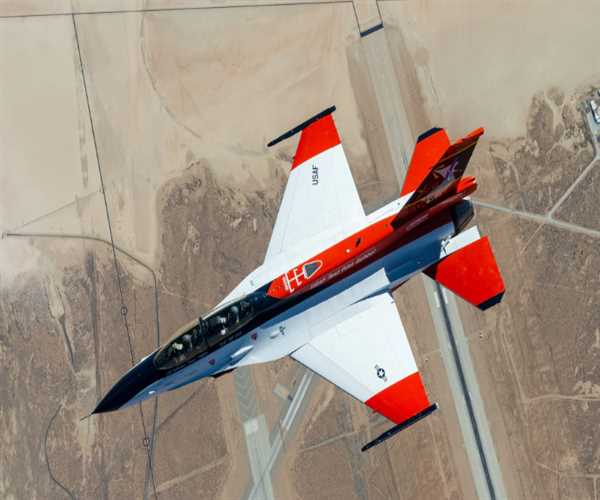Search here

17-May-2024 , Updated on 5/17/2024 5:33:13 AM
A US fighter jet enabled by Artificial Intelligence made history this week
With the dramatic launch of an experimental F-16 fighter jet, the sky over Edwards Air Force Base thundered, ushering in a new era in US military aviation history. With a twist, it was an innovative display of technological skill. There was no person piloting this F-16. Rather, artificial intelligence (AI) was precisely in charge of it. Frank Kendall, the secretary of the US Air Force, was also seated in the front seat.
AI is exciting the US Air Force because it allows them to have autonomous aircraft capable of several jobs without putting human lives at danger. By 2028, they hope to have more than 1,000 of these AI-equipped aircraft.
Notwithstanding this zeal, there are justifiable worries regarding the moral ramifications of autonomous weaponry.
AI takes off
The US Air Force has heavily leaned into artificial intelligence (AI), which represents one of the largest developments in military aviation since the advent of stealth in the early 1990s. The service is preparing for an AI-enabled fleet of over 1,000 autonomous airplanes, the first of which will be in operation by 2028, despite the fact that the technology is not yet completely matured.
It seemed appropriate that the duel happened at Edwards Air Force Base, a huge desert complex where the military has developed its greatest top-secret aeronautical innovations and where Chuck Yeager broke the speed of sound. A new generation of test pilots is training artificial intelligence (AI) agents to fly in combat within top-secret simulations and structures with many levels of cover against monitoring. Kendall came to witness AI in action and to publicly express her faith in the technology's potential for use in air warfare.
"Not having it puts you at risk for security." After landing, Kendall stated, "At this point, we have to have it," in an interview with The Associated Press. Because of operational security concerns, the AP and NBC were allowed to see the covert flight, provided they would not report on it until it was over.
The F-16, named Vista, piloted by artificial intelligence, imposed five times the force of gravity on Kendall's body while it performed nimble maneuvers at almost 550 kilometers per hour. It was almost a head-to-head match against another human-piloted F-16 as they raced to within a thousand feet of one another, swerving and looping to attempt to push their rival into weak spots.
After the one-hour trip, Kendall emerged from the cockpit beaming. He claimed to have observed enough throughout his flight to be confident in this AI's capacity to make decisions about using force in combat.

CONTENT WRITER
Writing is my thing. I enjoy crafting blog posts, articles, and marketing materials that connect with readers. I want to entertain and leave a mark with every piece I create. Teaching English complements my writing work. It helps me understand language better and reach diverse audiences. I love empowering others to communicate confidently.
Join Our Newsletter
Subscribe to our newsletter to receive emails about new views posts, releases and updates.
Copyright 2010 - 2025 MindStick Software Pvt. Ltd. All Rights Reserved Privacy Policy | Terms & Conditions | Cookie Policy